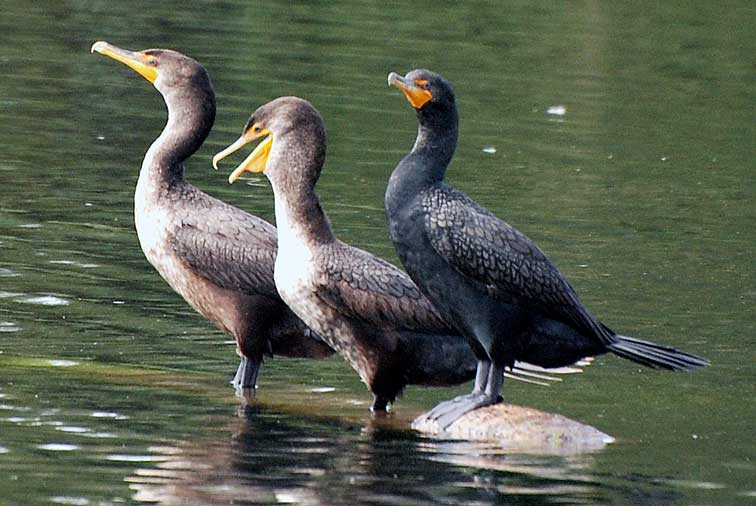Cormorant ‘management’ plan at Darlington Park draws ire of Oshawa birders
Published January 19, 2022 at 10:29 am

A plan by Ontario Parks staff at Darlington Provincial Park to “manage” a colony of Double-Crested Cormorants roosting in the park has drawn the ire of local birders and conservationists who believe the birds have been given a bad rap.
The story became local news when the Ministry of Environment, Conservation and Parks asked for comments from the City of Oshawa regarding their desire to keep the birds – the colony is about 200-strong – out of the park to preserve its “ecological integrity.”
The park, which abuts the Oshawa border with Clarington, provides erosion protection to McLaughlin Bay and the McLaughlin Bay wildlife preserve, a provincially significant wetland separated from Lake Ontario by a large sandbar. The initial damage caused by the birds was to shoreline erosion protection by the removal of live branches for nesting material.
Also at risk from the cormorants, according to parks staff, is a nesting pair of Piping Plovers, an endangered species that returned to Darlington in May of 2016 – following an 80-year absence along the north shore of Lake Ontario – and have continued to nest annually since then.
Parks staff had been using pre-nesting control techniques (such as noise deterrents) to prevent the cormorants from nesting but warned if the colony becomes established and the birds continue to nest in the area population management measures may be required.
Anna (bettyboop07) wrote in to say nesting wasn’t really happening at the park and wondered why a management plan would be needed. “My understanding is that no birds nested at the park last year and only two nested in 2020. And nowhere near the Piping Plover nesting area. Are you saying that the simply roosting cormorants are the target right now?”
Barry Kent MacKay, a local bird artist & illustrator, also wondered why the plovers were mentioned with the cormorants. “I can see no way that the cormorants could at all come into any kind of conflict with the Piping Plovers. Lots of others species that occur there could prey upon the plovers, chicks or eggs, but NOT the Double-Crested Cormorant. Nor does it compete with them for food or space – it makes absolutely no sense to mention cormorants as in any way having anything to do with the plovers.”
Gary Wheeler, a spokesman for the Ministry, said the potential threat to the park’s ecology and to the plovers would only be realized if staff did nothing and allowed the colony to become established at Darlington.
“Based on trends in other areas, there is potential that the colony could establish, grow and threaten the biodiversity of McLaughlin Bay, which is a provincially significant coastal wetland,” he explained. “Piping Plovers are a species at risk that in recent years has been nesting on the beach at Darlington Provincial Park, and a Piping Plovers Stewardship project is currently underway in the park.”
Wheeler said the only ‘management’ practices underway now are the pre-nesting control techniques to prevent the birds from nesting.
“At this time, no wildlife population management activities are required to be undertaken,” he added. “By being proactive and using these deterrent techniques now, we may prevent the establishment of a colony in the park and the need to manage the cormorant population later.”
The Ministry posted their desire to manage the population of the birds – possibly through oiling of the eggs; a cull was never part of the plan – in early December and City staff have provided copies to Durham Region, the Central Lake Ontario Conservation Authority, General Motors Canada, and Friends of the Second Marsh to ensure they are aware of the request.
The Posting includes a proposed amendment the park’s Management Plan to add the following language: ‘Native species with the potential to become hyper-abundant (e.g., Double crested Cormorants) may be managed, as required, to protect the park’s values and ecological integrity.’
The 516.45-acre Darlington Provincial Park, located within the Municipality of Clarington and on the Oshawa-Clarington municipal boundary, is one of the province’s smallest provincial parks and one of its most intensively used recreation-oriented open spaces.
INdurham's Editorial Standards and Policies




